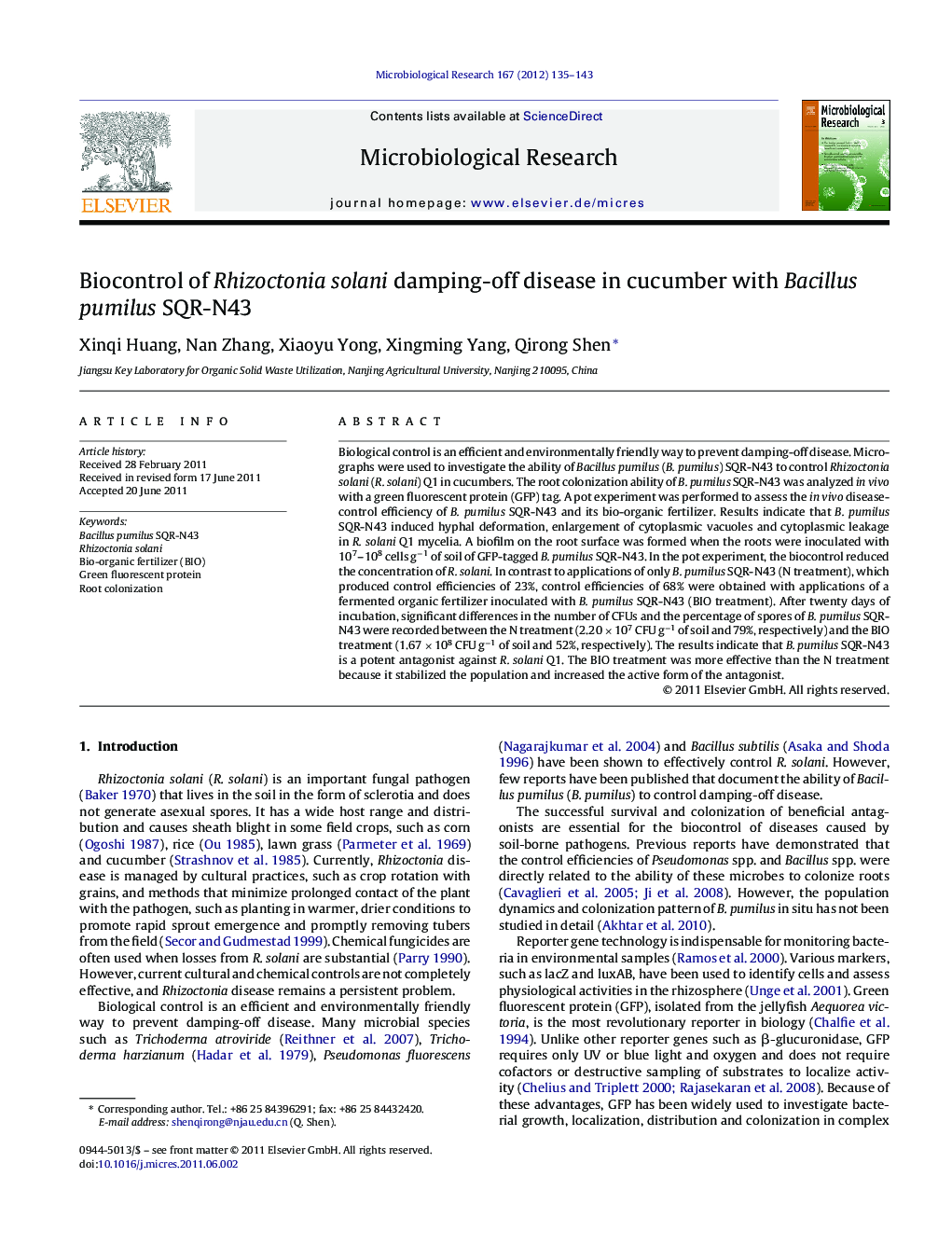| Article ID | Journal | Published Year | Pages | File Type |
|---|---|---|---|---|
| 2092416 | Microbiological Research | 2012 | 9 Pages |
Biological control is an efficient and environmentally friendly way to prevent damping-off disease. Micrographs were used to investigate the ability of Bacillus pumilus (B. pumilus) SQR-N43 to control Rhizoctonia solani (R. solani) Q1 in cucumbers. The root colonization ability of B. pumilus SQR-N43 was analyzed in vivo with a green fluorescent protein (GFP) tag. A pot experiment was performed to assess the in vivo disease-control efficiency of B. pumilus SQR-N43 and its bio-organic fertilizer. Results indicate that B. pumilus SQR-N43 induced hyphal deformation, enlargement of cytoplasmic vacuoles and cytoplasmic leakage in R. solani Q1 mycelia. A biofilm on the root surface was formed when the roots were inoculated with 107–108 cells g−1 of soil of GFP-tagged B. pumilus SQR-N43. In the pot experiment, the biocontrol reduced the concentration of R. solani. In contrast to applications of only B. pumilus SQR-N43 (N treatment), which produced control efficiencies of 23%, control efficiencies of 68% were obtained with applications of a fermented organic fertilizer inoculated with B. pumilus SQR-N43 (BIO treatment). After twenty days of incubation, significant differences in the number of CFUs and the percentage of spores of B. pumilus SQR-N43 were recorded between the N treatment (2.20 × 107 CFU g−1 of soil and 79%, respectively) and the BIO treatment (1.67 × 108 CFU g−1 of soil and 52%, respectively). The results indicate that B. pumilus SQR-N43 is a potent antagonist against R. solani Q1. The BIO treatment was more effective than the N treatment because it stabilized the population and increased the active form of the antagonist.
